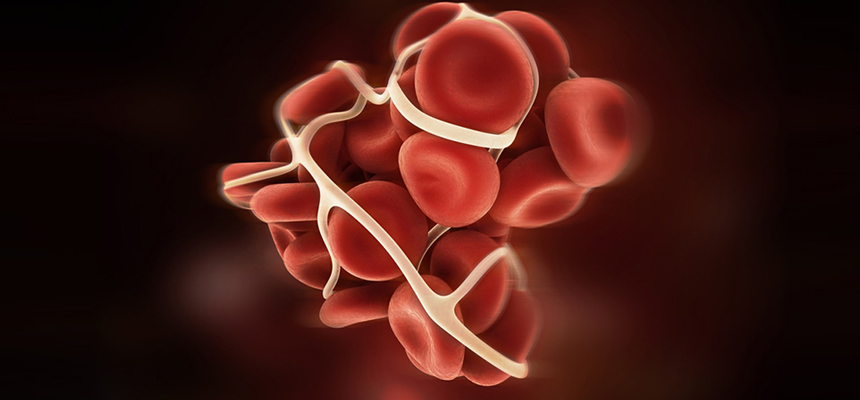Deep Vein Thrombosis in six times more in pregnant women

Thrombosis is a situation when a blood clot is formed inside the blood vessels. It obstructs the flow of blood in the circulatory system. When blood vessels are facing such a crisis, the body uses platelets and fibrin to reconstruct the blood clot to prevent loss of blood during injury. Deep Vein Thrombosis (DVT) can take a serious turn as the blood clot formed can be deep inside the veins. Blood clot is generally stagnant clump of blood that is gelatinous and solid in nature. They are usually formed in thighs or lower leg area but can also occur in other parts of the body.
DVT occurs in people who have crossed 50 years of age. Conditions that can give rise to DVT are:
![]() Having an injury that has damaged the veins
Having an injury that has damaged the veins
![]() Overweight or obese people as it puts more weight and pressure on legs
Overweight or obese people as it puts more weight and pressure on legs
![]() Family history of DVT who have a catheter placed in their veins
Family history of DVT who have a catheter placed in their veins
![]() Staying seated for a long time may also trigger DVT, especially if you are used to sitting for long hours and do seldom work or exercise.
Staying seated for a long time may also trigger DVT, especially if you are used to sitting for long hours and do seldom work or exercise.
![]() DVT can also be germinated if one has undergone surgery in lower extremities such as joint replacement surgery or fracture surgery.
DVT can also be germinated if one has undergone surgery in lower extremities such as joint replacement surgery or fracture surgery.
Having any one of these risk factors may lead to development of this issue. For pregnant women, hormones are greatly fluctuating and the uterus size expands, needing more blood. The increased size of abdomen restricts the normal blood flow of blood. As a result, pregnant women are at greater risk of developing DVT. The risk may even continue after giving birth, upto 6 weeks. Limiting yourself to bed rest or undergoing a C-section may increase risk of developing this condition.
Symptoms show up only in about half the persons suffering from DVT. These include:
![]() Swelling foot
Swelling foot
![]() Ankle or leg weighing more on one side.
Ankle or leg weighing more on one side.
![]() Cramping pain in affected area beginning from calf
Cramping pain in affected area beginning from calf
![]() Severe pain in foot or ankle
Severe pain in foot or ankle
![]() Skin over affected area turns pale bluish-green and shows mesh like structure.
Skin over affected area turns pale bluish-green and shows mesh like structure.
Most of the people ignore this condition until it's time for emergency treatment called pulmonaryembolism.
This is a life threatening condition of DVT where the vein or artery leading to the lung getsblocked. The risks and complications of DVT can be minimized by bringing about a fewlifestyle changes:
![]() Giving up smoking
Giving up smoking
![]() Losing weight
Losing weight
![]() Becoming more active
Becoming more active
![]() Move your legs often
Move your legs often
![]() Exercise especially focussing on lower body exercises
Exercise especially focussing on lower body exercises
![]() Walk after being at rest for a long time can prevent clot formation
Walk after being at rest for a long time can prevent clot formation
![]() Risk of developing DVT is low while travelling as a lot of excursion is involved
Risk of developing DVT is low while travelling as a lot of excursion is involved
![]() Constant sitting for hours does no good. Moving during intervals by stretching calves can allow blood to flow in an even manner.
Constant sitting for hours does no good. Moving during intervals by stretching calves can allow blood to flow in an even manner.
![]() Tight fitting clothes should be avoided as they constrict body flow in lower body.
Tight fitting clothes should be avoided as they constrict body flow in lower body.

 Disclaimer: Welthi.com does not guarantee any specific results as a result of the procedures mentioned here, and the results may vary from person to person.
Disclaimer: Welthi.com does not guarantee any specific results as a result of the procedures mentioned here, and the results may vary from person to person.









